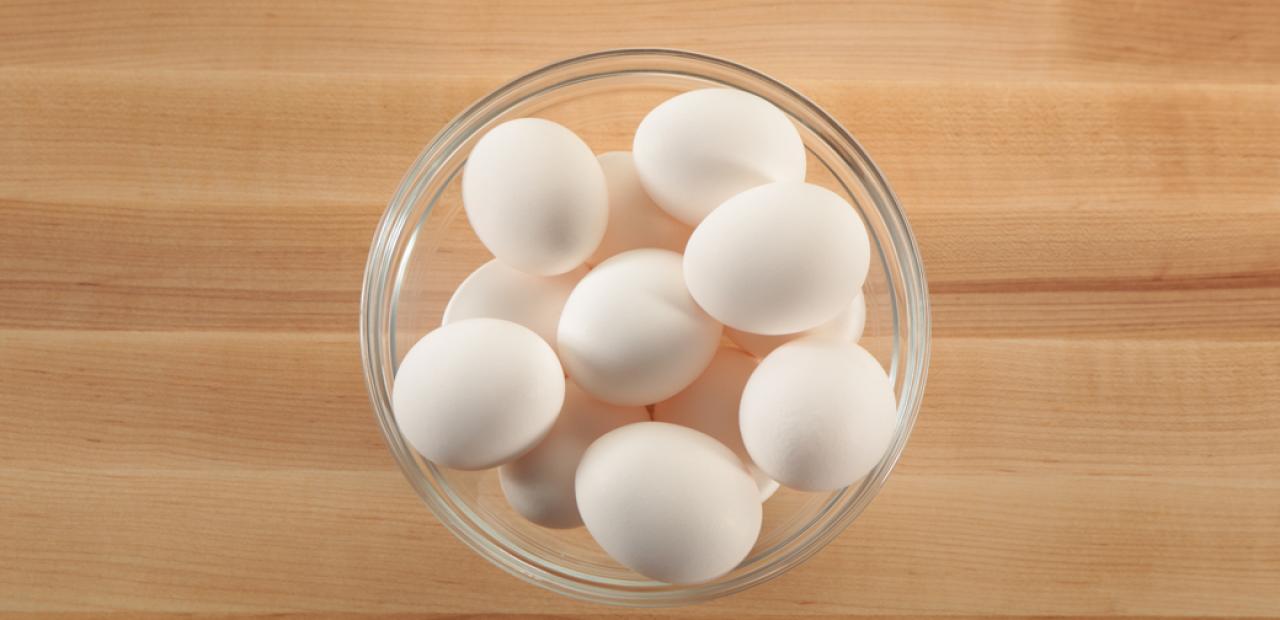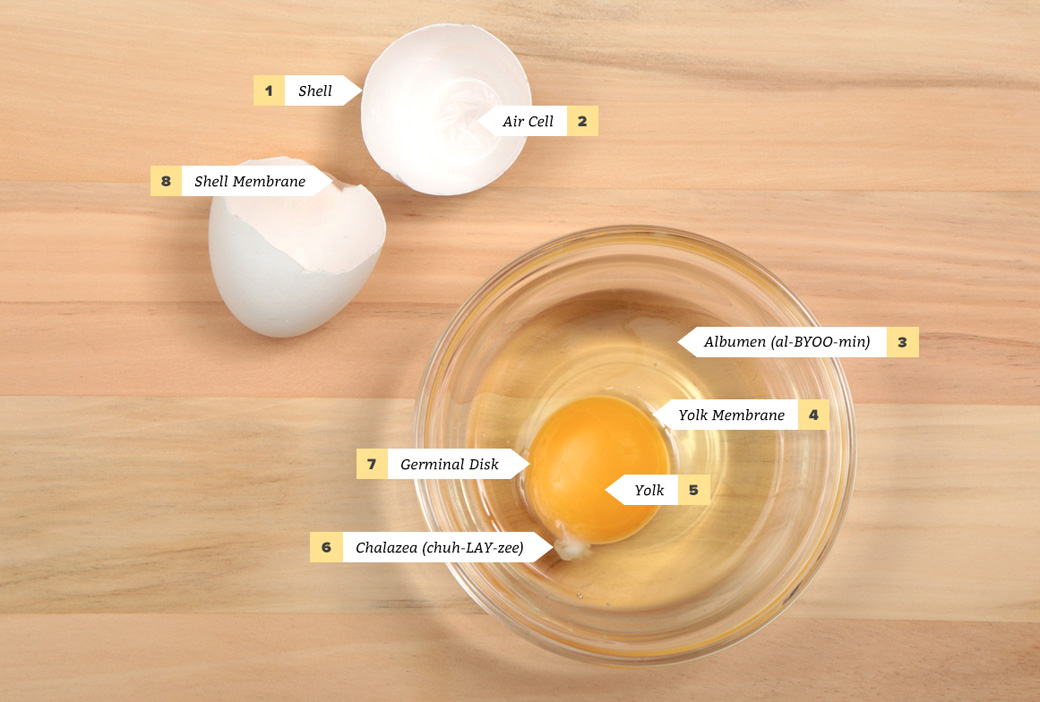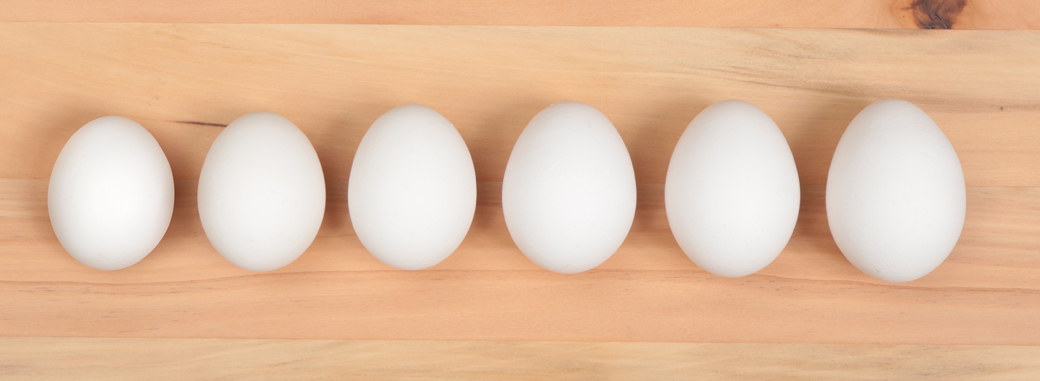Nutrition facts
One large (53g) Grade A egg contains 6g of protein and only 70 calories.
Canada’s Food Guide considers 2 eggs one serving from the Meat and Alternatives food group.
Nutritional Information per 53g serving:
| Calories |
70 Cal / 292.88.kJ |
| Fat |
5 g |
| Cholesterol |
195 mg |
| Sodium |
65 mg |
| Carbohydrate |
1 g |
| Protein |
6 g |
The vitamins and minerals of an egg and how they benefit you:
| Iron |
Carries oxygen to the cells, helps prevent anemia – the iron in eggs is easily absorbed by the body |
| Vitamin A |
Helps maintain healthy skin and eye tissue; assists in night vision |
| Vitamin D |
Strengthens bones and teeth; may help protect against certain cancers and auto-immune diseases |
| Vitamin E |
An antioxidant that plays a role in maintaining good health and preventing disease |
| Vitamin B12 |
Helps protect against heart disease |
| Folate |
Helps produce and maintain new cells; helps prevent a type of anemia, helps protect against serious birth defects if taken prior to pregnancy and during the first 3 months of pregnancy |
| Protein |
Essential for building and repairing muscles, organs, skin, hair and other body tissues; needed to produce hormones, enzymes and antibodies; the protein in eggs is easily absorbed by the body |
| Selenium |
Works with vitamin E to act as an antioxidant to help prevent the breakdown of body tissues |
| Lutein and zeaxanthin |
Maintains good vision; may help reduce the risk of age-related eye diseases, such as cataracts and macular degeneration |
| Choline |
Plays a strong role in brain development and function |
What’s the difference between brown and white eggs?
The difference between brown and white eggs is the hen! It may seem a bit obvious, but simply put, brown eggs come from brown- feathered hens and white eggs come from white-feathered hens. Nutritionally and taste wise, brown eggs are exactly the same as white eggs, so it’s really a matter of personal choice which eggs you choose.
Small Medium Large: What size eggs should I use?
You may have noticed that the eggs in your grocery store come in a variety of sizes ranging from peewee to jumbo. In Canada, all Grade A eggs are categorized by weight, not size or shape, so sometimes eggs in the same carton may appear to be different sizes, but their weight will always be within a similar range.
The following minimum weights are used to classify eggs in Canada:
What the sizes mean:
Peewee - less than 42 grams
Small - at least 42 grams
Medium - at least 49 grams
Large - at least 56 grams
Extra Large - at least 63 grams
Jumbo - 70 grams or more
Unless otherwise specified, more recipes are written using large eggs. Generally, medium and extra large eggs can be used instead of large eggs for recipes, unless you’re working with whipped egg whites. Everyday dishes can substitute 1:1, but for baking purposes, use the following conversions:
Egg Size Substitutions:
Most recipes are written using large eggs. To substitute another size, follow this chart:
| 1 egg |
2 |
1 |
1 |
| 2 eggs |
3 |
2 |
2 |
| 3 eggs |
4 |
4 |
3 |
| 4 eggs |
6 |
5 |
3 |
| 5 eggs |
7 |
6 |
4 |
| 6 eggs |
8 |
7 |
5 |
How Do Eggs Measure Up?
1 large egg = 3 tablespoons (45 mL)
5 large whole eggs = 1 cup (250 mL)
1 large egg white = 2 tablespoons (30 mL)
8 to 10 large egg whites = 1 cup (250 mL)
1 large egg yolk = 1 tablespoon (15 mL)
12 to 16 large egg yolks = 1 cup (250 mL)



